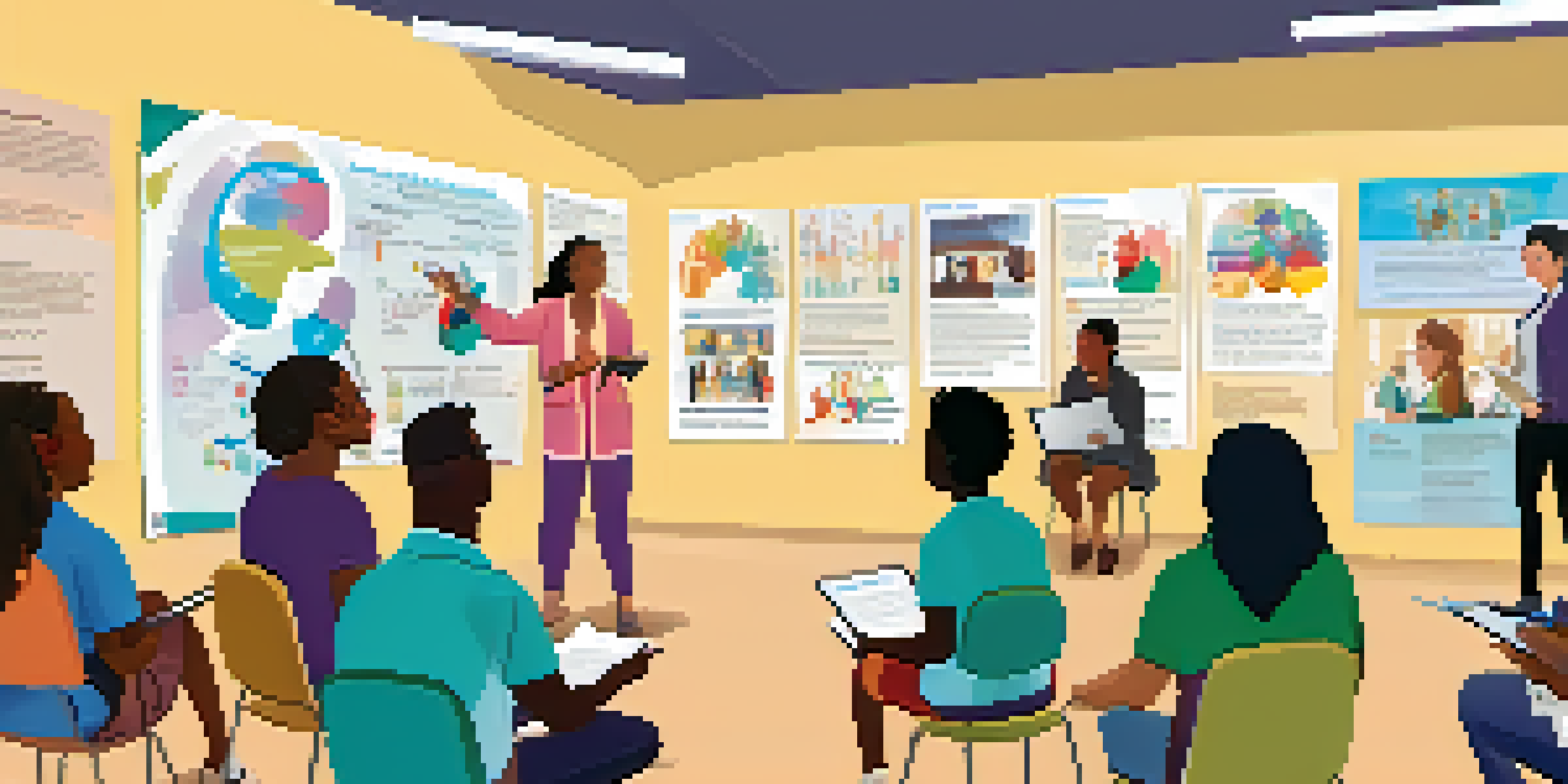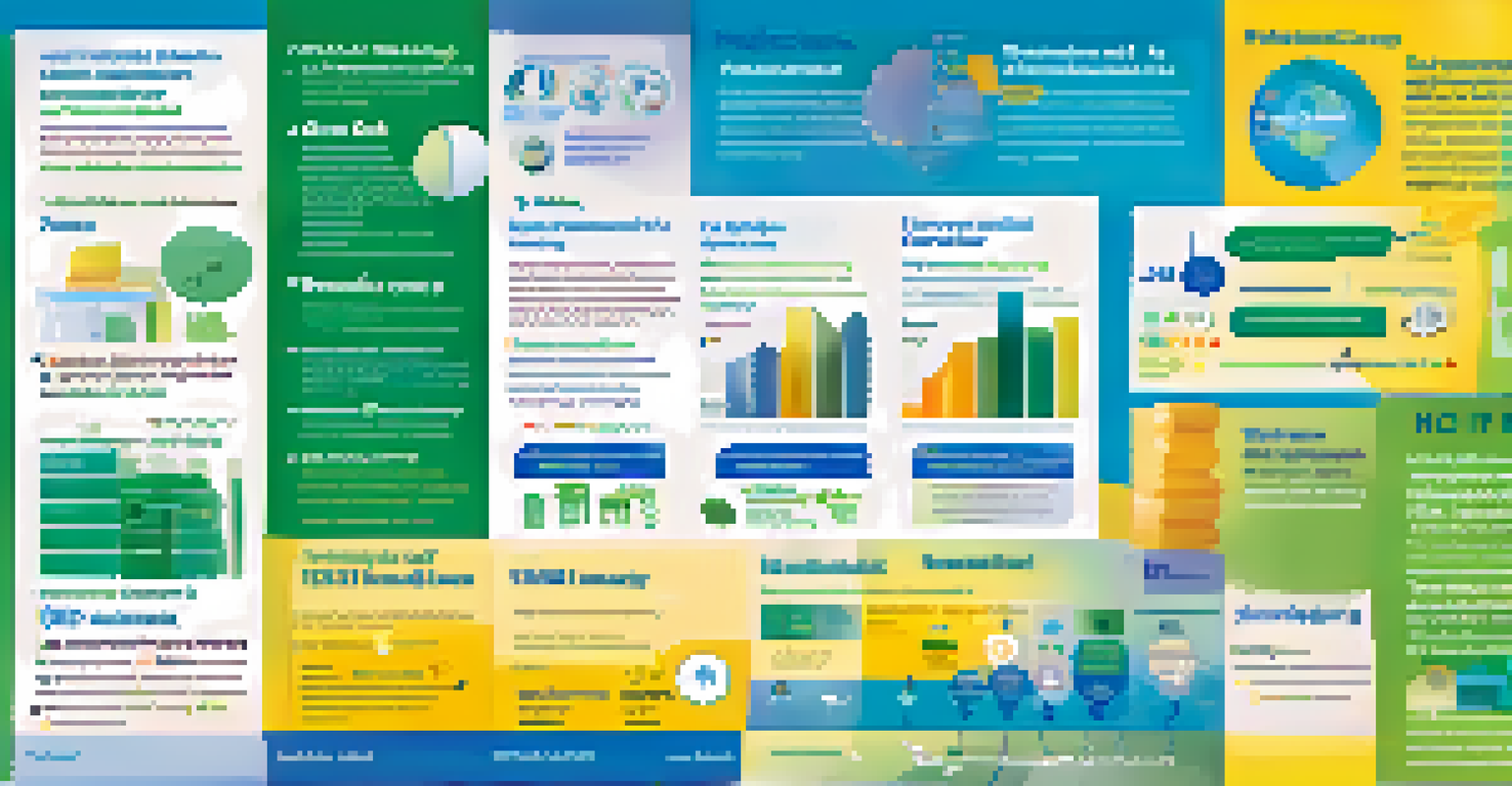Health Literacy in the Digital Age: Challenges and Solutions

Understanding Health Literacy: A Digital Imperative
Health literacy is the ability to obtain, process, and understand health information. In today's digital age, this has become increasingly important as we rely on online resources for health advice. With the vast amount of information available, distinguishing credible sources from misleading ones is crucial for informed decision-making.
Health literacy is a crucial component of the health system, empowering individuals to make informed decisions about their health.
Digital health literacy goes beyond just reading; it involves skills like navigating websites, understanding medical jargon, and critically evaluating information. For example, a patient searching for symptoms online must know how to assess whether the source is trustworthy. This skill set is essential for making informed choices about personal health.
Moreover, as technology evolves, so does the nature of health information. It’s not just about understanding medical terms but also about engaging with digital tools like apps and telehealth services. Thus, enhancing health literacy is crucial for empowering individuals to take charge of their health in this digital landscape.
Barriers to Health Literacy in the Digital Era
While digital resources offer great potential, several barriers hinder effective health literacy. One significant issue is the digital divide, where not everyone has equal access to technology or the internet. This divide can disproportionately affect marginalized communities, making it harder for them to access vital health information.

Another barrier is the complexity of medical language used in many online resources. For instance, individuals may struggle to understand terms like 'hypertension' or 'diabetes mellitus,' leading to confusion and misinterpretation of their health conditions. This complexity can deter individuals from seeking information altogether.
Health Literacy is Crucial Today
In the digital age, understanding and navigating health information is essential for making informed health decisions.
Additionally, misinformation is rampant on the internet, making it challenging for users to discern fact from fiction. Social media platforms, where anyone can share information, often exacerbate this problem. As a result, individuals may find themselves relying on inaccurate sources, which can lead to poor health decisions.
The Role of Technology in Enhancing Health Literacy
Technology can play a transformative role in improving health literacy. Online platforms can provide simplified, easy-to-understand health information that caters to diverse audiences. For example, infographics and videos can break down complex topics into digestible formats, making it easier for individuals to learn.
The internet is a powerful tool for health information, but it can also be a dangerous place if individuals cannot discern credible sources.
Moreover, interactive tools such as quizzes and symptom checkers can engage users in their health journey. These tools not only educate but also empower users to seek appropriate care based on their symptoms. This kind of engagement can foster a sense of ownership over one’s health.
Furthermore, mobile health (mHealth) applications can offer personalized health information and reminders, helping individuals better manage their health conditions. By integrating technology into health literacy efforts, we can create a more informed public, ready to navigate their health needs effectively.
Community Engagement as a Key to Improving Literacy
Community engagement is vital for fostering health literacy. Local organizations can play an essential role by hosting workshops and informational sessions that cater to the specific needs of their community. These initiatives can help demystify health-related topics and encourage open discussions about health.
Involving community leaders and health professionals in these efforts can enhance credibility and trust. For instance, when respected figures in a community share information, individuals are more likely to engage and seek help. This grassroots approach can create a supportive environment for learning.
Barriers to Accessing Health Info
Challenges such as the digital divide, complex medical language, and misinformation hinder effective health literacy.
Moreover, peer support groups can also contribute to building health literacy. These groups provide a platform for individuals to share experiences and knowledge, thereby empowering each other. By fostering a community of learning, we can promote better health outcomes for everyone.
Educational Initiatives and Their Impact
Educational initiatives aimed at improving health literacy are crucial in today’s landscape. Schools and universities can incorporate health literacy into their curricula, ensuring that students understand how to access and evaluate health information. This foundational knowledge can prepare future generations to navigate health challenges effectively.
Additionally, public health campaigns can raise awareness about the importance of health literacy. These campaigns can utilize various media platforms to reach a broader audience, emphasizing the need for individuals to seek reliable health information. By highlighting real-life stories and testimonials, they can make the message more relatable.
Furthermore, online courses and webinars can provide accessible learning opportunities for adults. These platforms can offer flexible learning options, enabling individuals to enhance their health literacy at their own pace, regardless of their background or previous knowledge.
The Importance of Clear Communication in Healthcare
Clear communication between healthcare providers and patients is essential for improving health literacy. Providers must strive to use plain language when discussing medical information, avoiding jargon that could confuse patients. For example, instead of saying 'myocardial infarction,' a doctor could simply say 'heart attack.'
Moreover, encouraging patients to ask questions can foster a more interactive dialogue. This approach not only empowers patients but also helps healthcare providers gauge their understanding. A simple 'Do you have any questions?' can open the door to a more engaged and informed patient.
Community Engagement Enhances Literacy
Local initiatives and peer support can significantly improve health literacy by fostering trust and shared learning.
Additionally, written materials provided during appointments should be easy to read and understand. Using bullet points, visuals, and summaries can enhance comprehension. By prioritizing clear communication, healthcare providers can significantly improve health literacy among their patients.
Future Directions for Health Literacy in a Digital World
Looking ahead, the future of health literacy in the digital age holds great promise. As technology continues to evolve, we can expect new tools and resources to emerge, making health information even more accessible. For instance, artificial intelligence could help curate personalized health content based on individual needs and preferences.
Moreover, collaboration between tech companies, healthcare providers, and educators can drive innovative solutions. By working together, these stakeholders can create comprehensive strategies that address the unique challenges of health literacy. This collaborative approach could lead to more effective and user-friendly resources.

Ultimately, fostering a culture of health literacy requires ongoing commitment from all sectors of society. By prioritizing education, clear communication, and community engagement, we can ensure that individuals are equipped with the knowledge they need to make informed health decisions in our digital world.